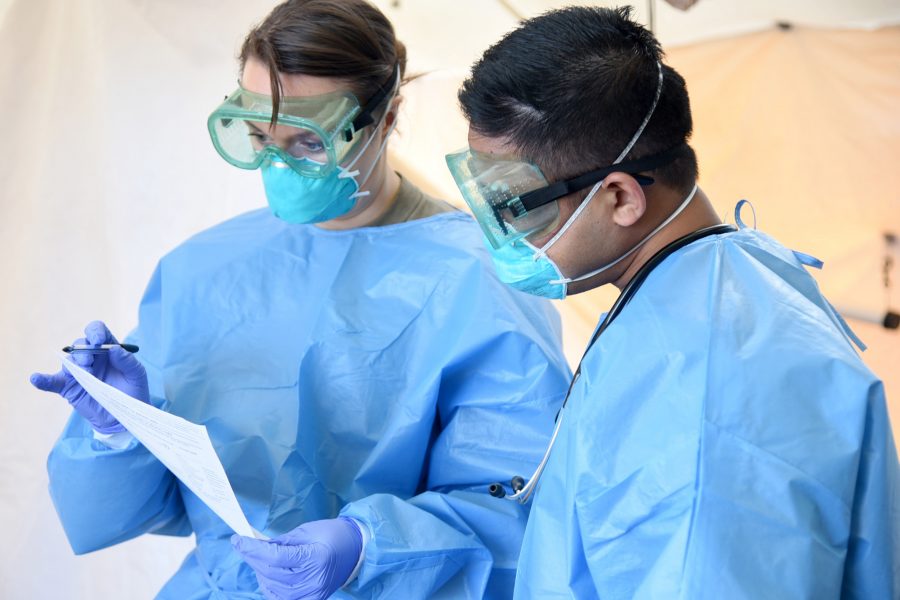The Defense Health Agency created a clearinghouse for information about COVID-19 patients’ medical and service histories, journeys with the disease, and clinical outcomes to help it improve treatment quality and keep Defense Department guidance for COVID-19 care current, DHA Director Army Lt. Gen. Ronald J. Place told Air Force Magazine in an exclusive interview on Aug. 20.
“It’s a way of tracking all of those different things so that we can both provide best care to the patients that we do have, but using continuous process improvement with the data within the system to continuously update the guidance that we give to the field on best modalities on how we care for our patients,” Place said.
The registry looks at patients in two ways.
First, it aims to understand their personal and medical histories leading up to their battles with COVID-19, Place said. This includes factors such as age, sex, medical issues that run in the families, where they serve within the Defense Department, deployments (and things troops might’ve been exposed to while overseas), current medical problems and medications, and their history of surgeries.
Next, the registry aims to understand what actually happened to the patient. This part of patients’ profiles includes:
- Which symptoms they experienced
- How severe the symptoms were
- Whether or not they were hospitalized
- If hospitalized, how they were treated (including medications, procedures, and whether or not they had to be put on a ventilator)
- Overall clinical outcomes (whether they recovered fully or with complications, or died)
The COVID-19 registry is by no means DHA’s first such construct.
For example, its Joint Trauma System Department of Defense Trauma Registry—or DoDTR, for short—helps the DOD community better treat trauma patients.
“The trauma data registry captures and documents, in electronic format, information about the demographics, injury-producing incident, diagnosis and treatment, and outcome of injuries sustained by US/Non-US military and US/Non-US civilian personnel in wartime and peacetime from the point of injury (POI) to final disposition,” the Joint Trauma System’s website states.
According to Place, DHA leveraged its nearly two decades of registry-development data and experience to create a “comprehensive COVID registry” in mere weeks—an accomplishment he counted among the agency’s lessons learned from the pandemic.
“The lesson is, ‘do you have this capability? Yes, [but] can you transition it to something else?’” he said.
As of Aug. 24, a total of 35,412 U.S. military service members had been diagnosed with COVID-19, 549 had been hospitalized in connection with it, and 19,901 had recovered.
Within the Department of the Air Force, a total of 5,556 Active-duty and/or Reserve troops had gotten the disease, and 3,182 had recovered as of the same day. These DAF totals don’t include Air National Guard cases. As of Aug. 19, a total of 855 ANG personnel had gotten COVID-19, and 509 troops had recovered.
